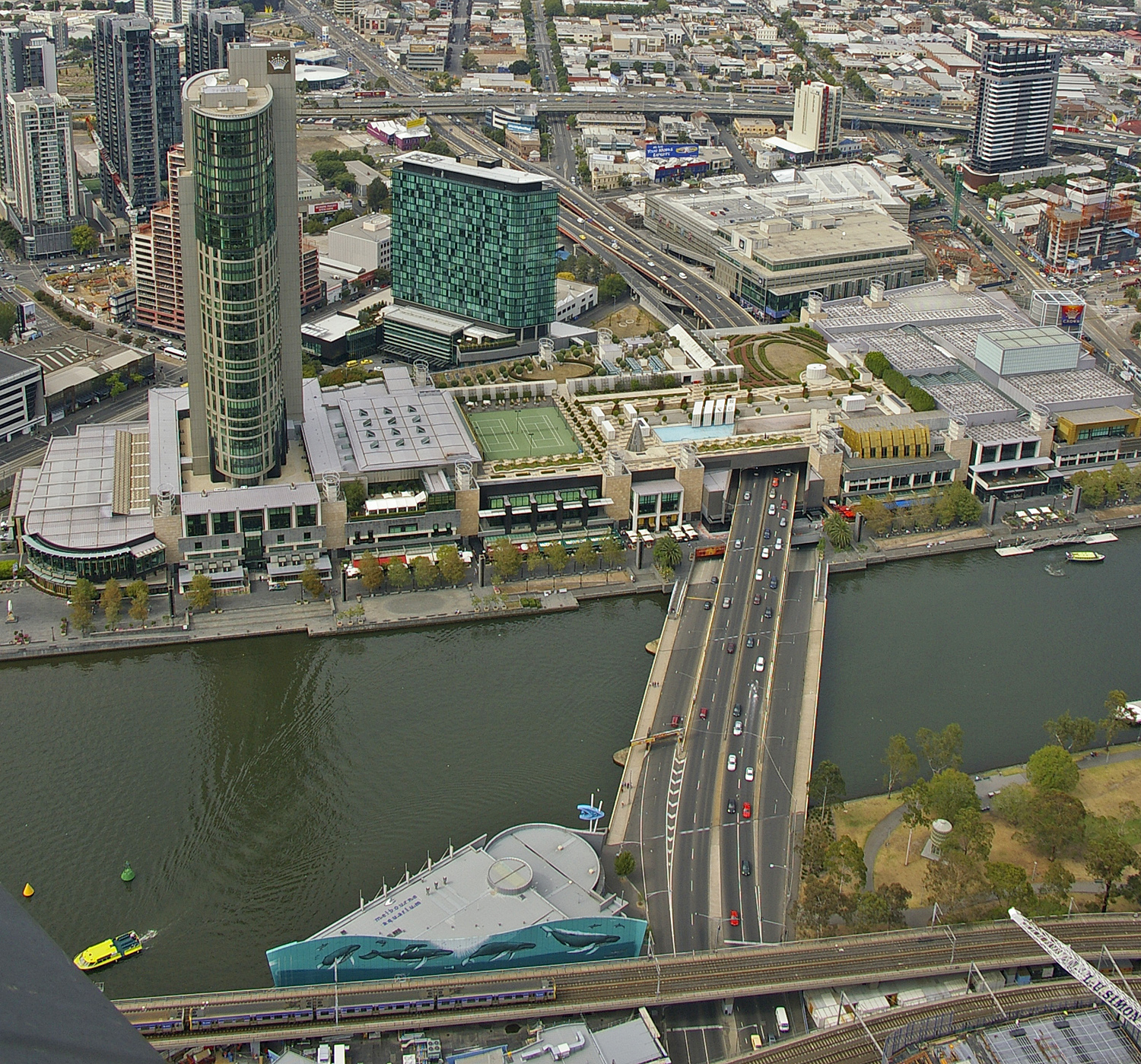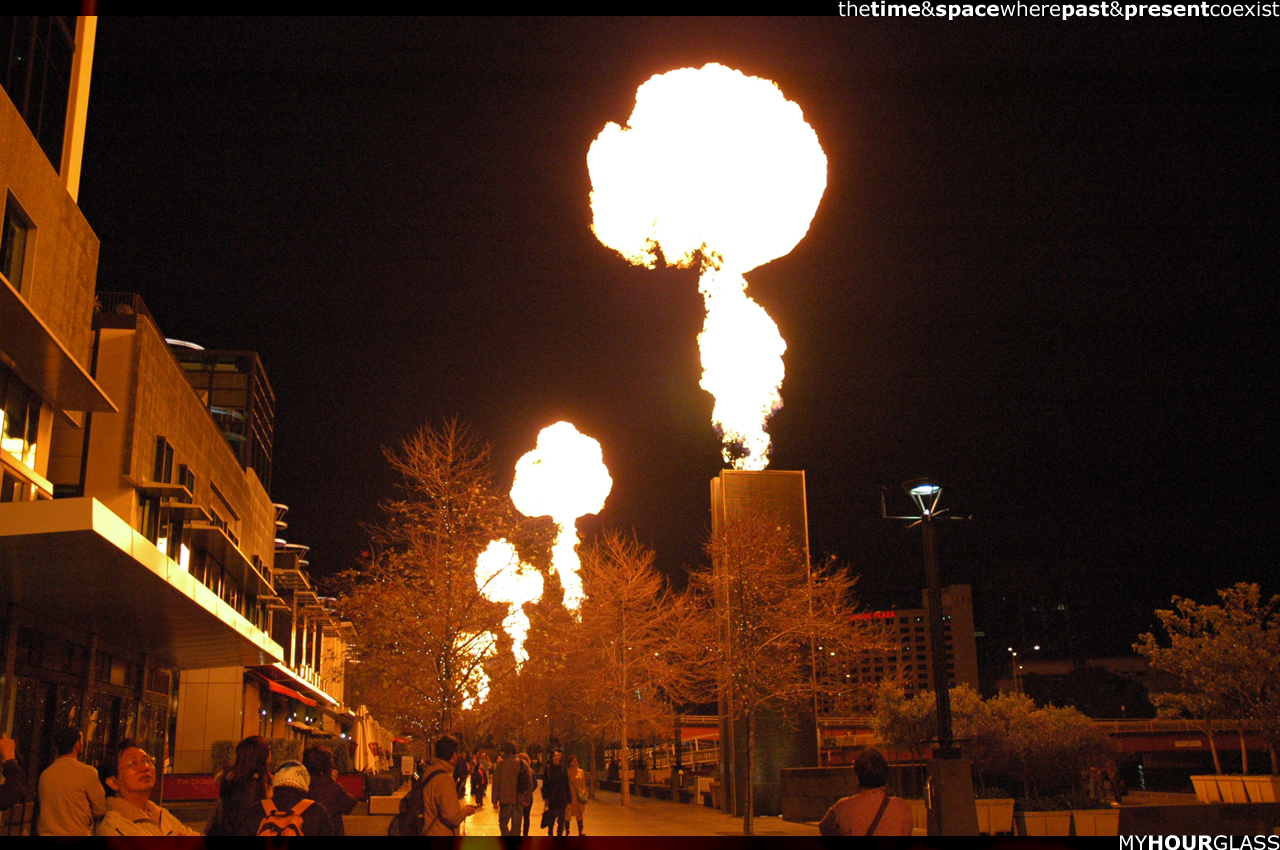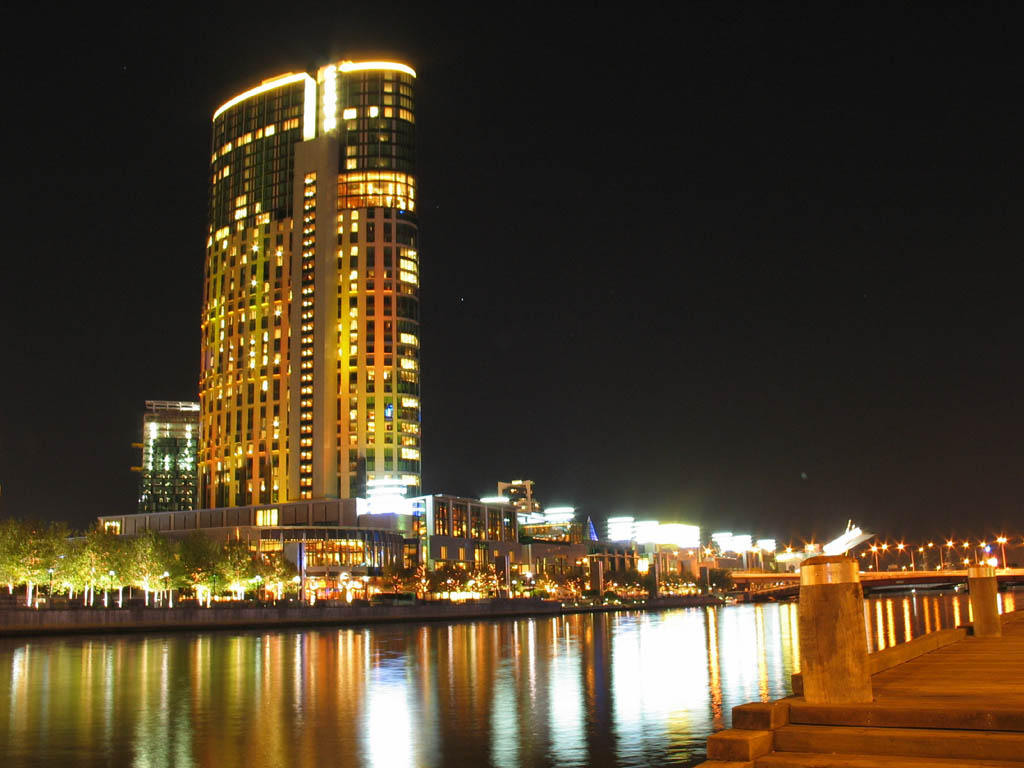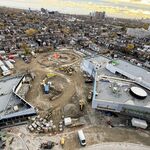Play to Extinction
By Kevin D. Williamson
We are the Silver Horde, and we are descending — on chartered buses, on Chinatown buses, and on the Greyhound “Lucky Streak†express bus we come, on crutches and canes, lapping obesely over the seats of mobility scooters, adjusting oxygen tubes, discreetly nursing Big Gulp cups full of tequila and Pepsi through bendy straws at three in the afternoon, doing serious damage to complimentary troughs of Cheez-Its and Famous Amos cookies. We are getting comped. Free passes to the all-you-can-eat buffet? Whatever: We have our own dedicated train, Amtrak’s Atlantic City Express Service (read: ACES), and we come rolling and thundering down the tracks bearing our Social Security checks, our welfare checks, and quite possibly our rent checks. We are the blue-rinsed, unhinged, diabetic American id on walkers, and we are scratching off lottery tickets the whole way there as we converge from all points on the crime capital of New Jersey — because we are feeling lucky.
Funny thing about Atlantic City: Nobody feels really obviously lucky to live there. Its population is declining (it has lost 40 percent since its peak), and among the foot soldiers of the gambling industry — blackjack dealers, scantily clad cocktail waitresses, cab drivers — it is difficult to find anybody who actually lives in it. One lightly clothed entertainer working at a particularly gamey establishment along a row of empty commercial buildings, video stores, and the occasional storefront mosque, all within a couple minutes’ walk of the casino district, snorted derisively at the notion of living in the city. “Oh, hell no. Too dangerous.†That’s AC: It’s a great place for a visiting go-go dancer, but she wouldn’t want to live there. Touring the local landscape of decay and disorder, it is hard to imagine why a whole range of American politicians — from such likely suspects as Ed Rendell and Andrew Cuomo to lots of otherwise conservative Republicans who really ought to know better — look at the city’s depressed and depressing precincts, its sad coat of glitz (Sinbad! At the Tropicana!) and say to themselves: “My state needs to get some of that action!â€
They had better think twice about what they are getting themselves into. The issue of gambling is not a question of rah-rah libertarians vs. no-no bluestockings: Nobody who looks seriously at the nexus between politics and gambling could possibly conclude that what is happening in Atlantic City, in Pennsylvania, on the Indian reservations, or in the lottery racket represents the operation of the free market. It is a cartel in most cases and a monopoly in many, all with the blessings of the state. The arrangement, in the words of one scholarly study of casinos in Montana, leaves government “a dependent partner in the business of gambling.†If gambling advocates were simply making a principled case that putative adults have the right to entertain themselves with their own money according to their own tastes (or, let’s be serious, lack thereof), then their argument would be persuasive. But what is in fact happening is that politicians smell money, and so government itself is getting into the game, taking gambling to be a fruitful model of economic development.
While the data are hotly contested, it is hard to deny that gambling has taken more out of Atlantic City than Atlantic City has taken out of gambling. A report prepared by the California Research Bureau on the potential for gambling in that state found that while many of the AC casinos had done well, there was little secondary economic impact: “The success of gambling in Atlantic City,†the report finds,
"has done little to revitalize the rest of Atlantic City and its business community. Atlantic City has been described as two cities. One is the casinos, and the other is a city of boarded-up buildings with a unemployed minority work force. Gambling has largely failed in achieving the objectives of job growth for local residents and city-wide economic development."
The federal government’s National Gambling Impact Study Commission notes that while gambling advocates favorably cite the “Mississippi Miracle,†the economic boomlet that that state experienced after legalizing casino gambling, “in reality the unemployment rate in Mississippi declined at about the same rate as the national average in the years from 1992 to 1998.†A University of Chicago report found that there was “no change in overall per capita income†as the result of gambling liberalization in the cases it studied. Governments, always eager to out-Enron Enron in the accounting-shenanigans olympics, earmark gambling proceeds for popular programs, then reduce general-revenue support for those programs and use the extra money to increase spending elsewhere. It’s a lot like slot machines: The house exploits the occasional jackpot to distract the schmucks from the fact that losses are a statistical inevitability. And while the accounting gets pretty hairy, it’s not too hard to find entries on the losing side of the ledger: In one study of Atlantic City, 22 percent of the local homeless reported that gambling was the proximate cause of their condition.
You wouldn’t know that from the ventisomethings. They’re the young ladies’ auxiliary to the Silver Horde, climbing leggily out of Lamborghinis and GT-Rs in front of Borgata, and they are a tribe apart: stiletto heels with jeans, the inevitable Starbucks venti cup, Marlboro Light contrails. Borgata is by most accounts the swankiest place in Atlantic City, which tells you a lot about Atlantic City, because Borgata is a dump, albeit a kind of expensive one. It has some dimly lit nightclubs for the ventisomethings to frolic in, and it’s big on overpriced restaurants serving food that was trendy five years ago (Kobe burgers, Asian fusion), the kind of place that has architectural spaces meant to be imposing but a maintenance schedule that’s running a bit behind: oversized glass showers and stained carpets. It’s a mind-jarring mix, a lot of polished marble and women in stylish dresses, with something in the middle that resembles nothing so much as a Chuck E. Cheese’s full of septuagenarians with mobility impairments. (Seriously, visit around four in the afternoon: It’s wheelchair derby in there.) Unlike the relatively cheery Caesars, which gold-leafs every surface with an inch of kitsch in a winking acknowledgement of the underlying plebeianness of the venue, Borgata affects a kind of Parisian hauteur like a down-on-his-luck aristocrat expecting things to get worse, which is what it is: In February it reported declining revenues and a 7 percent drop in operating profits. Gaming-industry analysts are gloomy about its outlook as the new $2.4 billion Revel casino prepares to open its doors.
For that new competition, Borgata can offer its gratitude to the great state of New Jersey and to Governor Chris Christie, thanks to whom taxpayers will be partners in, among other things, a burlesque show at Revel called “Royal Jelly.†(The burlesque show will not be the only source of eye candy: The casino also is implementing some unusual business practices, including a plan to fire all of its servers, hostesses, and waitresses every four or six years and force them to reapply for their jobs, in a more-nakedly-brutal-than-usual strategy for weeding out anybody who doesn’t look good in tall heels and a short skirt.) Revel began as a project headed up by the hapless Morgan Stanley, which owned 90 percent of the partnership behind the casino. The bailed-out investment bank, facing bigger problems and unimpressed by recent Atlantic City revenues, in 2010 took a billion-dollar write-down and pulled the plug on the half-finished project. Governor Christie moved in with a $261 million bailout of the orphan casino the bailed-out bank had bailed out on. Some of that money will be used for construction and operating expenses, but $70 million will sit quietly in an account earmarked for the project’s new Wall Street financiers, so that they’ll have something to walk away with if the casino tanks.
Governor Christie had better hope it doesn’t. In February, he released a budget proposal that contains some implausibly optimistic financial projections: Among other things, he’s betting that gambling revenues are going to rise by 14 percent, or nearly a half-billion dollars, resulting in $40 million in new taxes. While Governor Christie is putting up taxpayers’ money for Revel, he can at least say he’s getting government out of the way: There was a bloodbath at the Casino Control Commission, which was cut from 260 regulators and staff to 65, its budget reduced from $24 million to $9 million. (Taxpayers have little reason to celebrate that development: The commission’s budget is funded largely by fees charged to casino operators, not by state taxes.) Lest some of those axed regulators end up on New Jersey’s unemployment rolls, the state has been merrily signing waivers allowing them to go to work for the casinos, which they are forbidden by law to do for two years after leaving the commission. Governor Christie is executing what amounts to a state-level takeover of Atlantic City’s gaming district, and he is, as they say, all in. His optimism is not shared by many gambling-industry analysts, including Deutsche Bank Securities managing director Andrew Zarnett, who says that he fears the project will not produce any new revenues: “Revel casino will mostly cannibalize existing operators,†he told the Press of Atlantic City.
Which is to say, the supply of ventisomethings is limited. There’s only so much play at the top of the market, but that’s not where all the action resides, and the question that is seldom asked is: If New Jersey is successful in increasing its casino revenues, and Pennsylvania is successful, and Indiana is successful, and Mississippi is successful, and the Indians are successful, and Connecticut is successful — where exactly does the money come from?
The money will come from the Silver Horde. Casinos have long loved the high rollers, the whales who still rule in Vegas, but the low rollers are the new bread and butter for casinos in the rest of the country. If the politicians have their way, the Silver Horde will not have to hop on the Lucky Streak and go to Atlantic City: Atlantic City is coming to them.
Having long since shaken off the last vestiges of its ancestral Quaker sobriety, Pennsylvania has opened up casinos everywhere from obscure Pittsburgh suburbs to Valley Forge, right near the monument to George Washington’s brutal winter there, and the state flirted with licensing one on the edge of the battlefield at Gettysburg (a dispute over which legal wrangling continues). The Gettysburg project was stopped because its opponents included people with some real money and influence, but money and influence are not evenly distributed, which is why there’s a Harrah’s casino in Chester, one of Pennsylvania’s poorest cities (per capita income $9,052) and its most murder-happy (24 homicides in 2010 among 33,972 residents), a place where the school district just plain ran out of money in January, requiring a state bailout.
There’s a lot of broke to go around: In a particularly depressing sign of the times, the parent company of the struggling Miami Herald sold the paper’s Biscayne Bay headquarters to the Malaysian conglomerate Genting, which, in addition to its plantations and oil-and-gas businesses, is one of the world’s largest gambling concerns. It is the largest casino operator in the United Kingdom, and it is expanding remorselessly in the United States. The Pequot tribe may be the name on the brass plate at the giant Foxwoods Resort in Connecticut, but it was Genting, through its Kien Huat Realty subsidiary, that put the money up for the project. Likewise the Seneca Indians’ casino at Niagara Falls and the Wampanoags’ development in Massachusetts. Kien Huat Realty is the controlling shareholder in the Monticello Raceway in the Catskills, and Genting built the casino at the Aqueduct Racetrack in New York City.
Interestingly, Genting also has the contract to build the new New York City convention center — conveniently located next door to its casino in Queens. (Seriously — New York thinks America is coming to visit Queens.) Among Genting’s demands for the project is that it be given a monopoly on video-poker licenses in the area. It’s also asking for a sweeter revenue-sharing deal with the state, and says that an amendment to New York State’s constitution, which forbids table games and many other kinds of gambling, would be welcome. Governor Cuomo has pronounced himself favorably disposed, which puts him at odds with a long line of legendary New York politicians opposed to state-sanctioned gambling, from Fiorello LaGuardia to Governor Cuomo’s own father. (The Little Flower, who made a name for himself cracking down on gambling dens in 1930s New York — and smashing their paraphernalia with a sledgehammer — must be shaking his fist eternally in heaven that the city’s first legal casino is a stone’s throw from the airport named after him.)
When Genting showed up in Florida, it had plenty of cash to acquire the Herald building and surrounding properties, and it had plans in hand for a massive casino development. Which was pretty cocky, considering that casinos were not yet legal in Miami. “Nobody had even introduced a bill yet,†says Paul Davies, a fellow at the Institute for American Values who runs a project called Get Government Out of Gambling. “Talk about thinking you’ve got it all sewn up.†Genting hadn’t counted on the intensity with which its project would be opposed by the Walt Disney Company, and the Miami casino bill died in the Florida legislature. The state chamber of commerce and the local hotel association and Indian gambling interests were opposed, too, along with a few political activists, but it was Mickey Mouse who killed the casinos — for now. “Those guys will be back,†Davies says. And not only will they be back in Miami, they’ll be back everywhere.
Dave Jonas, president of the Parx casino, which is nestled among the strip malls of the hideous Philadelphia suburb of Bensalem, offered a preview of coming attractions at a recent speech to the Pennsylvania gaming association (held at Valley Forge, hooray), in which he said his firm had “underestimated significantly†how often the locals would pop in to gamble: “When I was in Atlantic City, to have twelve to fifteen trips out of customers, they were VIPs,†he said. At Parx, the low rollers are coming in two or three times a week, or 150 to 200 trips a year. “We have customers who give us $25, $30 five times a week.†They call these local-yokel joints “convenience casinos,†and they are the future: gambling anywhere, anytime. Some casinos already are experimenting with handheld devices so that players can piss their money away in the bathroom.
The industry term of art that denotes success vis-à -vis any individual gambler is: Play To Extinction. The mandate is to keep gamblers tied to the machines until they have handed over all the money they have to hand over. There are a great many ways to do this, but one way to keep the grannies tethered to the “Sex and the City: Change of a Dress†video slot machine is to keep them literally tethered: Casinos have begun offering rewards cards that give gamblers points based on their volume of play. The cards are affixed to neck lanyards and have to be kept plugged in to the machine to accrue points, producing a strangely umbilical sight.
The statistics are astounding: Gambling rates for the 65-and-up set went from 35 percent in 1975 to 80 percent in 1990. By 1996, gambling was a bigger business than movies, recorded music, sports, live entertainment, and cruise ships — combined. And while there is a great deal of debate about gambling addiction and its role in the casino industry’s business model, a government study found that “disordered gambling†rates are double for populations living within 50 miles of a casino. If cancer rates were double in the 50 miles surrounding a bubblegum factory, you can bet that the bubblegum factory would get the full Erin Brockovich treatment.
And it’s not just the gambling rates: In the years after the first casinos were built, Atlantic City went from having the 50th-highest per capita crime rate in the United States to being No. 1 on the list. That’s a big price to pay, but many in government are willing to pay it — for a big enough cut of the action.
“The nanny state is bad news,†Davies says. “But when you start looking into gambling and what the companies do, they’re not just running a business. The more problematic part is the government’s role. It’s a joint venture between the government and the casinos, and gaming pays a higher tax rate than do other businesses. In Pennsylvania, slot-machine revenue is taxed at 55 percent rate — 55 percent of the cut. Government is not a minority partner, but a majority partner.â€
The ride home on the Greyhound on Sunday morning is a damn sight less rollicking than the one down. A woman in the bus terminal is negotiating with a friend for a ticket home — she doesn’t have enough money left on her ATM card to buy it, and she’s pushing a handful of sweaty singles and loose change at her traveling companion. (Weird fact: You can use a card to get cash advances out of casino ATMs without entering a PIN — paradise for pickpockets.)
The Silver Horde is getting sober, and some are just plain sleeping it off, sprawled across seats and falling shambolically into the aisle. Another woman argues on the phone with a third party who apparently has failed in her assigned duty to pick the lady’s grandkids up from wherever they are staying. (The Parx casino in Bensalem has seen several gamblers cited for leaving their kids in parked cars while trying their luck inside.) Various byzantine disputes are under way. One cannot help but recall the fact that between October 2009 and May 2010 some $1.8 million in California welfare benefits was withdrawn at casino ATMs; the corresponding Social Security figure must be shocking. The ventisomethings are off to Aspen or Mustique or wherever is in fashion this year. The Silver Horde is filing off grumpily at the Port Authority Bus Terminal and at Greyhound stations across the country, sad and bedraggled and losers right down to the literal Webster’s meaning of the word. Cash has changed hands, but in no more than what economist Paul Samuelson called the “steile transfers of money or goods between individuals, creating no new money or goods. Although it creates no output, gambling does nevertheless absorb time and resources. When pursued beyond the limits of recreation, where the main purpose after all is to ‘kill time,’ gambling subtracts from the national income.†Call gambling a vice, call it an addiction, call it a harmless diversion, call it anything you fancy — but don’t call it economic development.





































